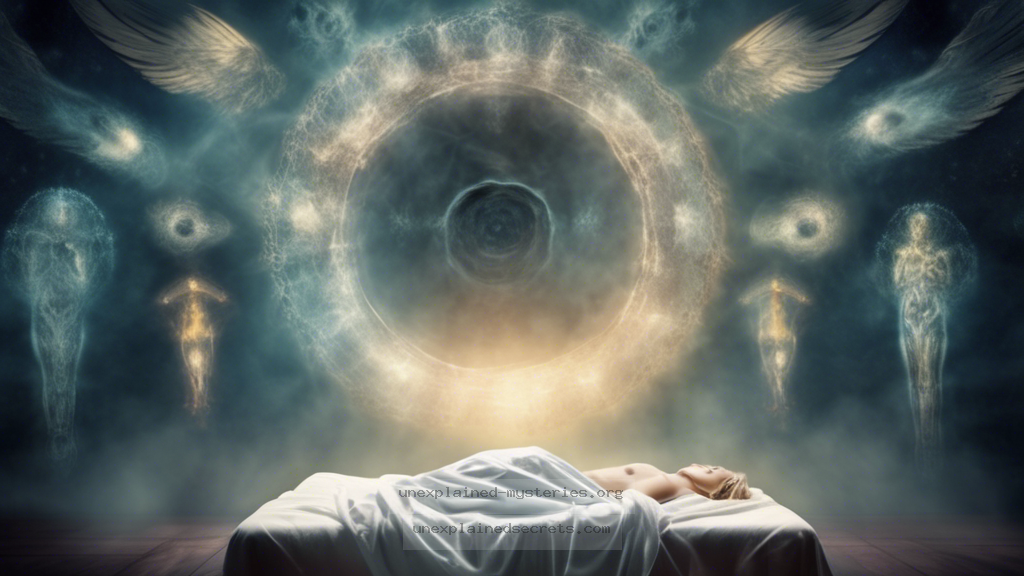What Happens to Consciousness After Clinical Death? Exploring the Unexplained Mysteries of Near-Death Experiences
What Happens to Consciousness After Clinical Death? Exploring the Unexplained Mysteries of Near-Death Experiences
The question of what happens to consciousness after clinical death is one of the most profound and enigmatic issues faced by humanity. Near-Death Experiences (NDEs) offer tantalizing glimpses into this mystery, challenging our understanding of life, death, and the nature of consciousness itself. Over the years, countless individuals have reported similar experiences during life-threatening situations, raising questions about the continuity of consciousness beyond physical demise. This blog post aims to delve deep into the compelling mysteries surrounding NDEs, exploring historical accounts, scientific theories, and the implications for our understanding of life and death.
Historical Context of Near-Death Experiences
Near-Death Experiences have been documented throughout history, appearing in religious texts, literature, and anecdotal accounts. One of the earliest known references comes from the ancient Greeks, where philosophers like Plato wrote about the soul’s immortality and experiences in the afterlife. In the 20th century, Dr. Raymond Moody’s groundbreaking work in 1975, “Life After Life,” popularized the term “near-death experience” and highlighted common elements among NDEs, such as the feeling of peace, out-of-body experiences, and encounters with bright lights or deceased loved ones.
Since then, the phenomenon has garnered attention not only from spiritual communities but also from the scientific community, leading to extensive research and documentation. The question of whether consciousness persists after clinical death has gained traction, with many researchers investigating the neurological and psychological aspects of these experiences.
Core Concepts and Theories in NDE Research
At the heart of NDE studies lies the debate regarding the nature of consciousness. Traditional neuroscience posits that consciousness is a product of brain activity; therefore, when the brain ceases functioning, so does consciousness. However, NDEs provide counterarguments, as many individuals report vivid experiences while clinically dead or in a state of unconsciousness.
Some core theories that have emerged include:
- Biological Theories: Some scientists attribute NDEs to physiological responses to trauma, such as lack of oxygen (hypoxia) or neurotransmitter surges, leading to hallucinations or altered states of perception.
- Psychological Theories: These suggest that NDEs may be coping mechanisms for the mind to deal with impending death, creating comforting visions and experiences.
- Transcendental Theories: These propose that consciousness exists independently of the physical body, suggesting a potential afterlife or spiritual realm.
Documented Cases of Near-Death Experiences
Numerous documented cases illustrate the mysterious nature of NDEs. One of the most famous cases is that of Dr. Eben Alexander, a neurosurgeon who experienced a profound NDE while in a coma due to bacterial meningitis. He reported vivid experiences of floating in a bright, loving environment, meeting spiritual beings, and feeling a profound sense of peace. What makes his account particularly compelling is that, as a scientist, he initially believed that consciousness was solely a product of brain activity.
Another remarkable case is that of Pam Reynolds, who underwent a complex surgery for a brain aneurysm. During the procedure, her brain was temporarily stopped, and her body was clinically dead. She described an out-of-body experience where she could hear conversations and describe events occurring in the operating room, which were later corroborated by medical staff. Such documented cases raise questions about the reliability of consciousness beyond the physical state.
Practical Implications of Near-Death Experiences
The implications of NDEs extend beyond mere curiosity; they can significantly impact individuals’ views on life, death, and spirituality. Many who experience NDEs report a profound transformation, often becoming more compassionate and less fearful of death. This phenomenon has led to increased interest in integrating NDE research into psychological and therapeutic practices. Mental health professionals are beginning to recognize the value of discussing NDEs with patients who have faced life-threatening situations, as these experiences can provide comfort and understanding during grief and loss.
Key Takeaway: NDEs can lead to transformative experiences, often changing individuals’ perspectives on life, purpose, and the afterlife.
Alternative Perspectives on NDEs
While much of the scientific community seeks to explain NDEs through biological or psychological lenses, alternative perspectives exist. Many spiritual traditions regard NDEs as glimpses into the afterlife or other dimensions of existence. Some cultures have rich mythologies surrounding death, often viewing it not as an end but as a transition to another state of being.
For instance, in many Indigenous cultures, the concept of death is seen as a journey rather than a final destination, echoing the sentiments expressed in numerous NDE accounts. This perspective invites a broader understanding of consciousness, suggesting that our lives are part of a continuous cycle rather than isolated events.
Common Misconceptions About NDEs
Despite the growing body of evidence surrounding NDEs, many misconceptions persist. One common myth is that NDEs are purely the result of hallucinations induced by neurological activity. While some aspects of NDEs may have biological underpinnings, the consistency and depth of experiences reported by individuals across cultures point to a more complex phenomenon.
Another misconception is that NDEs must conform to a specific narrative or experience. While certain elements like tunnel experiences and encounters with a bright light are frequently reported, each individual’s experience is unique, shaped by personal beliefs, cultural background, and emotional state. This variability underscores the need to approach NDEs with openness and curiosity rather than rigid skepticism.
Misconception Alert: NDEs are not uniform; they vary widely, reflecting individual beliefs and experiences.
Best Practices for Investigating NDEs
As interest in NDEs continues to grow, researchers and enthusiasts alike are encouraged to approach the subject with a balanced perspective. Here are some best practices for investigating NDEs:
- Gather Diverse Accounts: Collecting a wide range of personal testimonies helps build a more comprehensive understanding of NDEs.
- Conduct Interdisciplinary Research: Collaboration between neuroscientists, psychologists, and spiritual leaders can lead to more nuanced insights.
- Maintain Open-mindedness: While skepticism is important, remaining open to the possibility of consciousness beyond death can foster deeper inquiry.
- Utilize Technology: Advances in neuroimaging and consciousness studies can shed light on the brain’s activity during NDEs.
Future Developments and Ongoing Research
The exploration of NDEs is far from over. Ongoing research aims to unravel the complexities of consciousness and its relationship to the brain. As technology advances, new methodologies will likely emerge, allowing for deeper investigations into the nature of NDEs. Studies examining the brain’s electrical activity during clinical death or near-death states are already under way, with researchers hoping to uncover the mechanisms behind these profound experiences.
Furthermore, the integration of NDE research into mainstream psychology and medicine may lead to more holistic approaches in treating patients facing terminal illnesses. By acknowledging the spiritual dimensions of NDEs, healthcare providers can enhance the quality of life for individuals grappling with mortality.
Conclusion: Embracing the Mystery of Consciousness
The question of what happens to consciousness after clinical death remains a captivating and unresolved mystery. Near-Death Experiences provide a unique window into this enigma, offering insights that challenge traditional notions of life and death. As we continue to investigate these phenomena, it is crucial to approach the subject with both scientific rigor and an open heart, recognizing that the journey into understanding consciousness may lead us to profound realizations about ourselves and our existence.
Ultimately, whether one views NDEs through a spiritual lens or a scientific one, the stories and experiences shared by those who have ventured into the realm of death remind us of the beauty and complexity of life — a reminder that every end may also signify a new beginning.
Other Articles
Recent Posts
- What Happened to Flight MH370? The Conspiracy Theories That Still Haunt Us
- What Secrets Lurk Within the Walls of the Infamous Trans-Allegheny Lunatic Asylum?
- What Evidence Supports the Existence of Bigfoot in the Pacific Northwest?
- What Happened to the Indus Valley Civilization? Unraveling the Mysteries of Ancient Urban Life
- Can Telepathy Be Scientifically Proven Through Laboratory Evidence?







